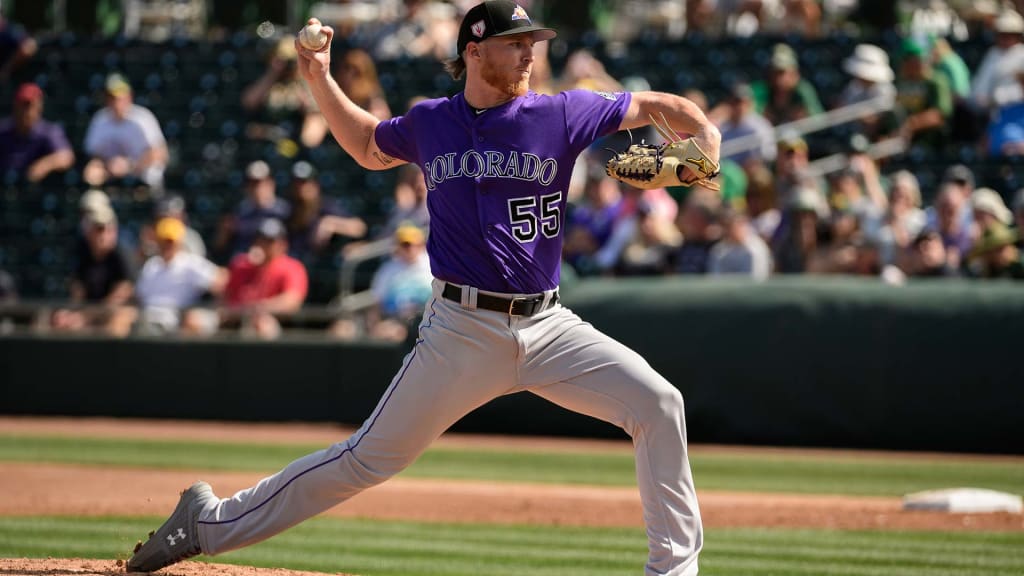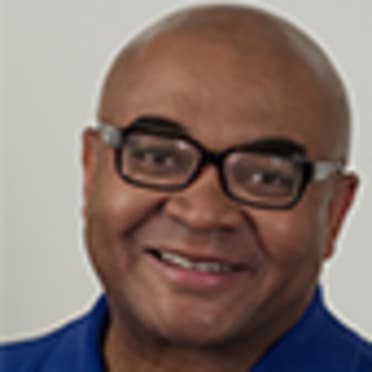
SCOTTSDALE, Ariz. -- Rockies right-hander Jon Gray started his car, looked at his dashboard and figured if humans and technology could work together in an automobile, why can’t they combine for balls and strikes?
With the independent Atlantic League experimenting with a bevy of MLB ideas, either to improve pace of play, help the offense or use technology, Gray believes one of the proposals -- a computer-assisted strike zone -- has merit. But rather than have the plate umpire removed, or have his decisions undone, he wants real-time assistance.
Imagine the umpire seeing a virtual strike zone image, much like the fans watching on TV, but from the ump’s perspective. The technology doesn’t make the call, but it makes the call easier.
“I was thinking about this driving home the other day,” Gray said. “In a car windshield, there’s something called a heads-up display. You can see through your windshield, but it’s not really there.
“Maybe the umpires can be assisted. It gives them a visual of what the strike zone really is. It’s not necessarily taking over for them, but they’re getting assistance.”
The idea of a computer-assisted strike zone has gained traction in an effort to make the game fair and strictly by the rules. But it brings up a number of questions. Here are a few:
• If the plate umpire’s strike zone judgment is no longer needed, what would be the point of exposing a human to some of the bruises, or, even worse, head impact of being behind the catcher?
• With so many parks equipped with sensors already, to what degree would security have to be beefed up to prevent a team from uncorking a dastardly scheme to affect the game?
• No doubt the umpires would want to preserve a job, even if there were no longer a person behind the plate. How would the quality of calls regarding the fair/foul plays down the line, the plays at the plate and the occasional balk be affected with an umpire moved from behind the plate to another location?
Gray’s suggestion keeps a brave, high-integrity, well-positioned person employed.
But is it possible?
Former Rockies general manager Dan O’Dowd, currently an analyst on MLB Network, sees some merit.
O’Dowd and his son, Chris O’Dowd, a former catcher in the Padres, Rockies, Braves and White Sox systems, created WIN Reality as a virtual-reality business that can apply the technology in a multitude of ways, such as training athletes and scouting.
So imagine a virtual-reality unit within an umpire’s mask. Would it be based on sensors in the ground and attached to hitters? Sticking it on hitters could be dicey, since you could imagine it being manipulated before the hitter steps into the box. But what if the umpire’s unit could adjust the strike zone as soon as the batter moves into hitting position?
“With the technology we are seeing, almost anything is possible as long as you want to invest in its development,” O’Dowd said.
“We haven’t experimented with it up to now, but anything is possible -- just expensive.”
Even though VR is his family’s business, he wouldn’t necessarily want it running baseball.
“I would caution not to eliminate too much from our game, as that ultimately is what keeps our fans interested in our sport,” O’Dowd said.
Gray believes in keeping the call up to the human, who makes it instantaneously.
“That way we don’t have to have machines and programs take over, and leave the human element involved,” Gray said.
